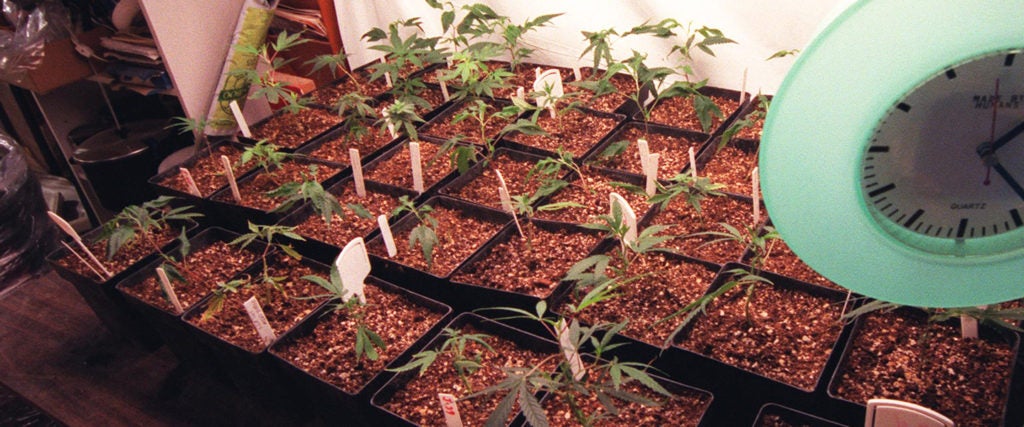So you started growing weed in quarantine, and you had great success. Congrats! You love your plants — and the weed they produce — so much so that you wish they’d make little babies so you could enjoy an endless supply of identically dank nugs.
Good news: Cloning weed plants is a thing, and you can easily make duplicate plants from those you already have, which will produce exact copies of the weed you already savored. Simply follow these instructions on how to clone marijuana plants from Stephen Campbell, head horticulturalist at Grobo.
Assembling Your Tools
Before you get started, you want to have your tools ready and raring to go. Campbell says you need the following equipment:
- Humidity Dome
- Spray Bottle
- Pruning Shears
- Razor Blade
- Rooting Gel
- Rooting Medium
- Cup of Tap Water
Having a joint handy may be helpful, too. Just saying.
Picking Your Mother Plant
The first step when cloning weed plants is choosing a mother plant to clone more plants from. Remember, the clones will be identical to the mother plant, so make sure to choose a strain that you really like. The mother plant should also be in a vegetative state before you take clippings from it to make clones. In the typical marijuana plant growth cycle, the vegetative state happens between three weeks of growth and 16 weeks of growth, when the plant is receiving lots of light and growing rampant.
Taking Your Cuttings
Once you have your mother plant chosen, you can use pruning shears to clip some cuttings (or branches), which will eventually become your clones. Ideally, Campbell explains that these cuttings can be as short as three inches or a long as seven, depending on the size of your dome. “I like to have at least two or three sets of leaves on them,” he says.
As you take cuttings from your mother plant, place them in your cup of tap water — this prevents air bubbles from entering the freshly-clipped ends, which could kill your cuttings.
Preparing Your Cuttings for Growth
Once you have a few cuttings in a cup, you need to mess around with them a bit. First, Campbell suggests using your pruning shears to cut the tips off of each leaf. This, he says, helps stop the process of photosynthesis — converting light energy into new growth toward the top of the plant — so the cutting can instead focus its strength on sprouting new roots.
Next, use your razor blade to cut the end of the stem — where you clipped the cutting from the mother plant — at an angle. This creates more surface area for stem cells to grow into your growing medium. Then, dip where you just sliced into your rooting gel, which promotes root development, and again, prevents damaging air bubbles from entering the stem.
Planting Your Cuttings
You can go ahead and plant your prepped and dipped cuttings about one inch into your dampened growing medium, which should now be in your uncovered humidity dome. Then, spray the cuttings with pH-balanced water, and cover them with the dome. The goal here is to create a humid environment to stop the process of transpiration — water and nutrients moving through the plant and evaporating from the leaves to encourage new growth toward the top — so the cutting can again focus its energy on sprouting new roots. Campbell suggests spraying your cuttings twice a day every day for the first week, then once a day for the second week.
You should also notice small vents on the top of your humidity dome. Keep them completely closed for the first 24 to 36 hours, then gradually open them throughout the first week — after about a week, your vents should be halfway open. You can open them all the way during the second week. You should also be keeping your cuttings under a weak light for 18 hours a day while they grow in the dome.
Transplanting Your Clones
In about 14 days, your cuttings should have decent root systems going, which means they’ve made the transition from cuttings to small plants. You may notice some yellow or brown leaves — these are simply a result of the plant not sending those nutrients upward while it sprouts roots, and you can clip them off if you want. New growth will start soon, I promise.
At this point, you can safely transplant your clones to a new growing medium, where you can start feeding them and treating them like you did the plants you had so much success with before.
If you take good care of them, they’ll return the favor.

